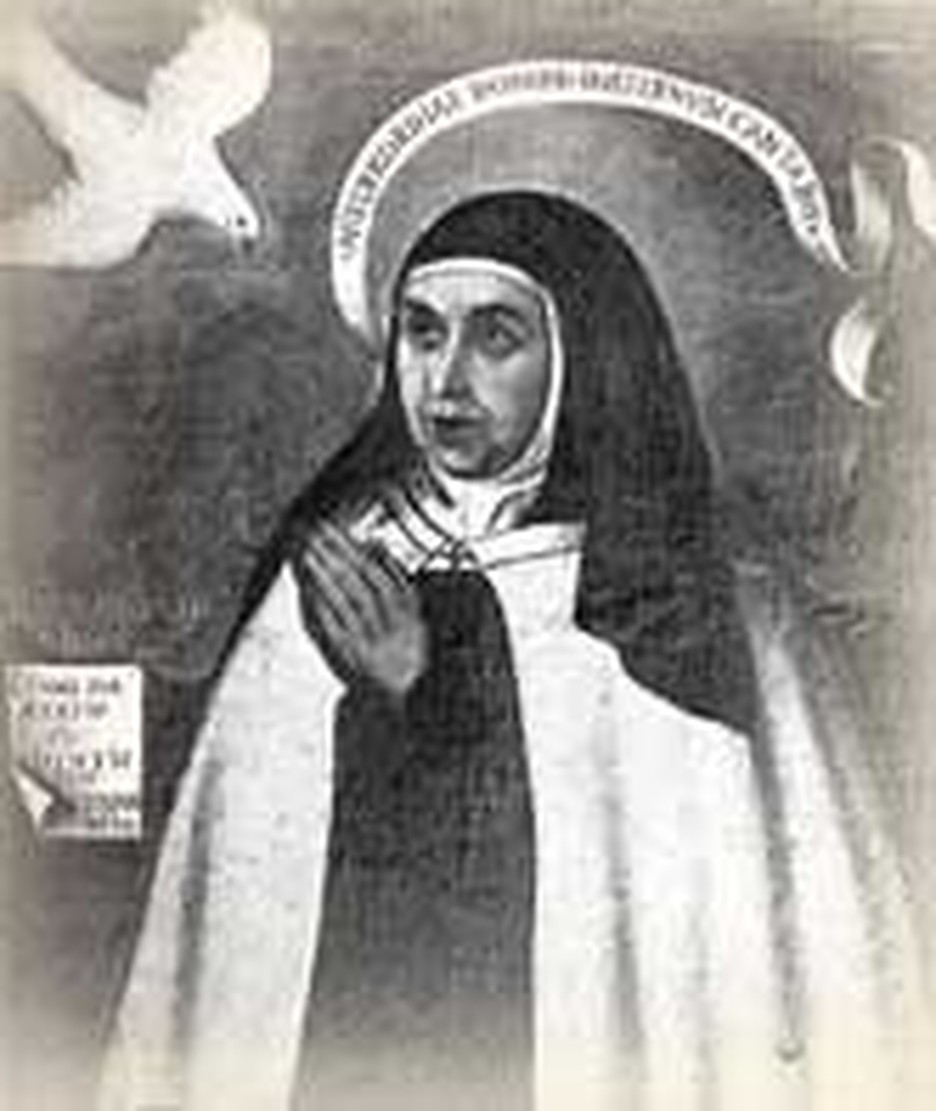
The Carmelite order (Order of Our Lady of Mt. Carmel) was founded by St. Berthold in Palestine around 1154. Claiming descent from hermits who had lived on the mountain in Biblical times, it became an order devoted to poverty and meditation. The Carmelites achieved great success under St. Simon Stock (c. 1165-1265) an Englishman, who was their General from about 1247. Simon had a vision in which he was given the highly improbable assurance that anyone who wore the scapular (shoulder cloth) would be saved.
One of the most distinguished of all Carmelites was St. Teresa of Avila, who stands beside St. John of the Cross and St. Mary Magdalene di Pazzi as a great mystic. She was declared a doctor of the church in 1970, setting her alongside Augustine, Ambrose, Gregory and Jerome. To date, only about thirty people have been honored with that title.
Teresa was born in 1515, just twenty-three years after Columbus claimed America for Spain. Her family was prominent, and she led the sheltered life of an upper-class Spanish child, although not without her share of suffering. Her mother died while she was very young. Early in life, Teresa suffered from an unknown illness. After much soul-searching during her teen years, she entered the Carmelite convent of the Incarnation at Avila in 1536. Here she had a recurrence of her illness, complicated by paralysis, but she recovered in 1542--a recovery that she believed was the result of intercession by St. Joseph.
Dissatisfied with the worldliness that had crept into the Carmelite order, Teresa felt inspired to found the Convent of St. Joseph in 1562 with the blessing of Pope Paul IV. Between 1567 and 1582, she founded sixteen other convents of Discalced (shoeless) Carmelites. In 1568 she founded a reform convent for Carmelite men of which the fiery poet St. John of the Cross was one of the first two members. He became her closest friend.
Although her reforms were approved by the General of the Carmelite Order, he withdrew his support when the Princess of Eboli, who fomented trouble in the Pastrana convent, denounced Teresa to the Inquisition in 1574. Teresa survived this blow and succeeded in restoring the ancient strictness of the Carmelite rule, eventually regaining the support of the General. In those days, troubled as the Catholic church was by the Protestant Reformation, it was dangerous to admit to experiencing visions and raptures, as Teresa did, but she escaped by hiding when the Inquisition threatened. Her good friend, St. John of the Cross, did not escape. He spent a year in a dungeon for his religious experiences.
Teresa was an active woman, who traveled and spoke her mind in a manner that was not always acceptable for a woman and a nun in the Church of Spain. Some biographers, impressed with her independence in a rigid and restricted society, imagined that she had Protestant leanings. However, she was an ardent Catholic in the swirl of the counter-reformation, who believed that she had a duty to correct differences between Lutheran teachings and the doctrine of the Catholic church.
Teresa was an administrator, a writer, and above all a visionary. When she was sixty-seven she oversaw the foundation of the last of her convents--Burgos. She planned to return to Avila, but first agreed to visit the Duchess Maria Henriquez in Alba de Tormes. The journey proved to be too much for the foundress, who immediately took to bed. Three days later she told the nun who accompanied her, "At last, my daughter, the hour of death has come." She died at nine o'clock in the evening of this day, October 4, 1582 and was buried in Alba de Tormes. She was canonized in 1622, only forty years later.
Bibliography:
- Adapted from an earlier Christian History Institute story by Diana Severance, Ph.D.
- "Carmelites," and "Simon Stock." Oxford Dictionary of the Christian Church, edited by E. A. Livingstone and F. L. Cross. Oxford, 1997.
Last updated July, 2007








